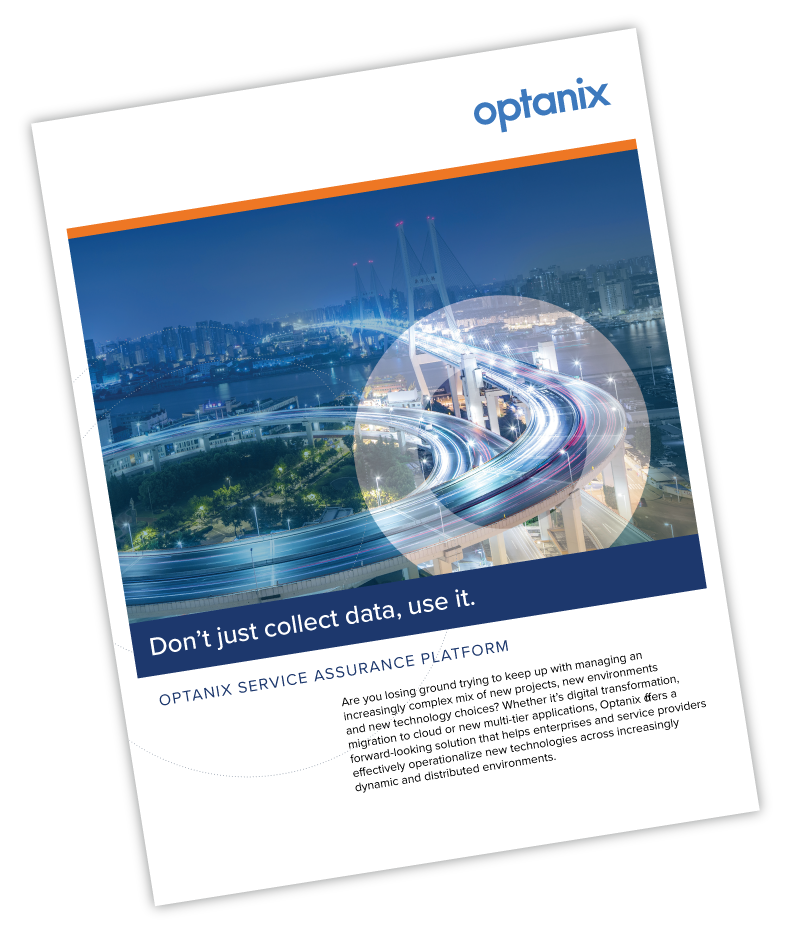
What is State-of-the-Art in IT Infrastructure Diagnostics?
The world of IT infrastructure monitoring and diagnostics is in the midst of a storm of innovation and disruption.
By the day, your world is becoming increasingly complex.
Revolutions in robotics, immersive reality, artificial intelligence and a multitude of connected devices are bringing a new level of technological sophistication to the physical world. Organizations that assume their existing IT infrastructure will support these systems do so at their peril.
More traditional environments that consist of an enterprise data center, a bit of cloud utilization plus remote office branches are also not immune to the pressure to expand the capabilities for their infrastructure.
Successful infrastructure management requires understanding your data and communications at the most granular levels. To battle today’s super storms, you need the most sophisticated weather prediction technology. The same goes for the innovation and disruption storm – you will need the most sophisticated monitoring and diagnostic technologies to deliver predictable IT services.
How is the infrastructure changing?
As IT organizations struggle with steadily increasing amounts of data, they have adapted by deploying new database solutions, network equipment with faster port speeds, more sophisticated routing intelligence and, most importantly, comprehensive management and configuration capabilities.
State-of-the-art infrastructures are evolving like this:
- The data center is seeing software-defined networking (SDN) and virtual networking making further inroads.
- The cloud providers – Amazon, Microsoft, Google, Salesforce – are under pressure to increase capacity. This is manifested in faster everything, from faster port speeds to faster deployment of services.
- The ballooning Internet of Things (IoT) will be the large-scale user of 5G technologies. We are already seeing some deployments in controlled environments this year.
As it becomes more commonplace for companies to depend on services and applications from disparate cloud providers, multi-cloud – including SD-WAN, edge computing and fog computing – will become more important. Since the bottom line for businesses’s use of the cloud is that it is always available and the data is secure, management of edge and fog architectures is vital.
Intent-based networking (IBN) – where policies, access levels and so on are defined by intent and the actual configuration takes place via machine learned software – shows much promise in enabling IT organizations to maintain control of the ever-increasing complexity of their estate.
Here too, though, the management and diagnostic software needs to be exceptionally robust. While convenient for the admins, it is indeed yet another layer of complexity on the system.
How is the industry reacting?
So, where does this leave the IT manager with only 24 hours in the day? Let’s look at where the leading infrastructure players are taking us.
Interestingly, where once Cisco was content to build the hardware that provides connectivity just about everywhere and leave the software to others, they have recently taken a much more aggressive stance.
This is due to a couple of factors. One is that the lifespan of current routers and switches is relatively long, and the other is that, as applications and services move to the cloud, the average enterprise has less need for new hardware. Both obviously affect revenue, and bespoke management software for their hardware can help make up the difference.
Having recognized the strategic advantage of this approach, other vendors are following suit. Extreme Networks is providing a combined end-to-end solution from the data center to the access point. Juniper Networks, originally focused on core routers, now also offers a full suite of products including routers, switches, network management software, network security products and software-defined networking technology.
What is state-of-the-art?
These major players, while offering individual takes on toolsets, all provide:
- Analytics and Performance Management – leveraged by machine learning of real-time telemetry
- Management and Orchestration – which includes simple graphical interfaces for troubleshooting, help desk support tasks, problem solving and reporting
- Workflow Automation – to accelerate service deployment and delivery
- Security & Identity Control – such as management software tools that allow you to control policy from any network node
At the heart of all of these services is the ongoing monitoring and maintenance of the network mesh required in order to ensure the maximum uptime and availability of services and resources.
To this end, today you have multiple avenues to consider:
- Root Cause Analysis – You need a problem-pinpointing solution that is as close to real-time as possible, and closely tied to the change management process, so that repeat events are considerably less likely.
- Automated Remediation – When events are being logged, or telemetry suggests something is going awry, automated workflows can resolve issues without technician intervention. Carefully crafted, they are invaluable to smoothly running networks.
- Hierarchical Correlation – These tools understand the connectivity of the network and can map the appropriate causality graph to ensure the proper elements are addressed.
- Tool Consolidation – The top monitoring system providers are offering integrated tools that take the place of a typical NOC’s multiple screens. Consolidating these into a single overview – with the ability to drill down into an issue when needed – goes a long way to ensure trouble-free operations.
- Performance Management – This helps you understand whether your bandwidth policies are appropriate to your services, and also to identify and eliminate bottlenecks for operational efficiency.
- Service Level Reporting – This is critical to enabling you to quantify key metrics and other KPIs to ensure SLA compliance.
Whether you choose a hardware and software solution from a single vendor or choose from the varied offerings from the software-only crowd, the capabilities of these newest management and diagnostic suites have become functional necessities for battling the storm.
Discover how to address problems before they impact critical business services.
